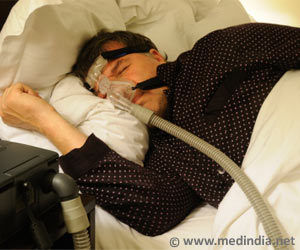A new study provides evidence that obstructive sleep apnea (OSA) is highly prevalent in people with multiple sclerosis (MS).

Results show that one-fifth of MS patients surveyed in a large tertiary MS practice carried a diagnosis of OSA, and more than half were found to have an elevated risk for OSA based on a validated screening tool. Further analysis showed that OSA risk was a significant predictor of fatigue severity, even after adjusting for potential confounders such as age, gender, body mass index (BMI), sleep duration and depression.
"OSA may be a highly prevalent and yet under-recognized contributor to fatigue in persons with MS," said lead author and principal investigator Tiffany J. Braley, MD, MS, an Assistant Professor of Neurology from the University of Michigan Multiple Sclerosis and Sleep Disorders Centers in Ann Arbor, Mich. "Our study suggests that clinicians should have a low threshold to evaluate MS patients for underlying sleep disturbances."
The study results appear in the Feb. 15 issue of the Journal of Clinical Sleep Medicine, which is published by the American Academy of Sleep Medicine.
"Obstructive sleep apnea is a chronic illness that can have a destructive impact on your health and quality of life," said American Academy of Sleep Medicine President Dr. M. Safwan Badr. "People with multiple sclerosis who are found to have a high risk of OSA should be referred to a board certified sleep medicine physician for a comprehensive sleep evaluation."
Braley and her colleagues, Benjamin M. Segal, MD (Director of the University of Michigan Multiple Sclerosis Center), and Ronald D. Chervin, MD, MS, (Director of the University of Michigan Sleep Disorders Center) studied 195 MS patients who completed a sleep questionnaire and four validated instruments designed to assess daytime sleepiness, fatigue severity, insomnia severity and OSA risk. Medical records also were accessed to examine clinical characteristics that may predict fatigue or OSA risk.
Advertisement
The National Multiple Sclerosis Society (NMSS) estimates that approximately 400,000 people in the U.S. have MS, making it the most common disabling neurological disease of young adults.
Advertisement
Source-Eurekalert














